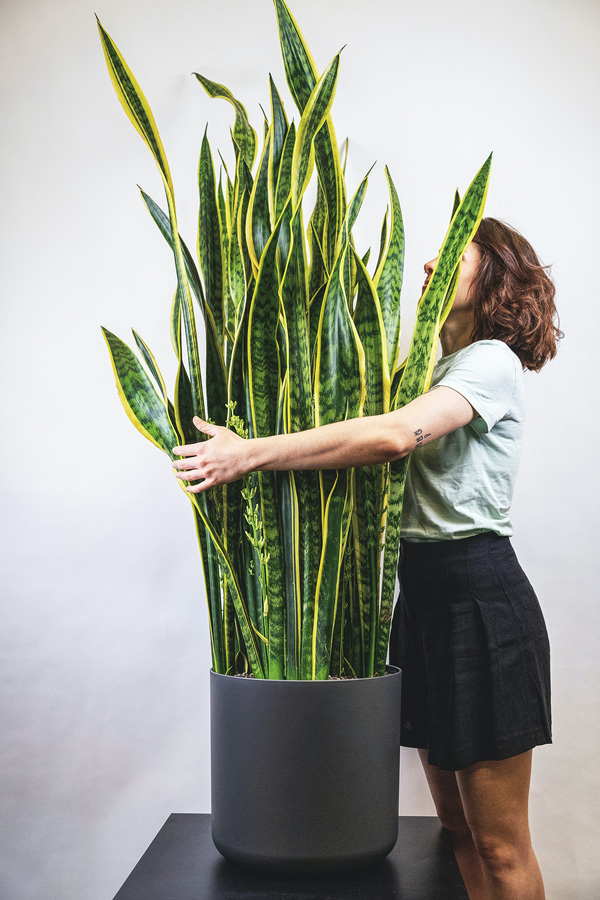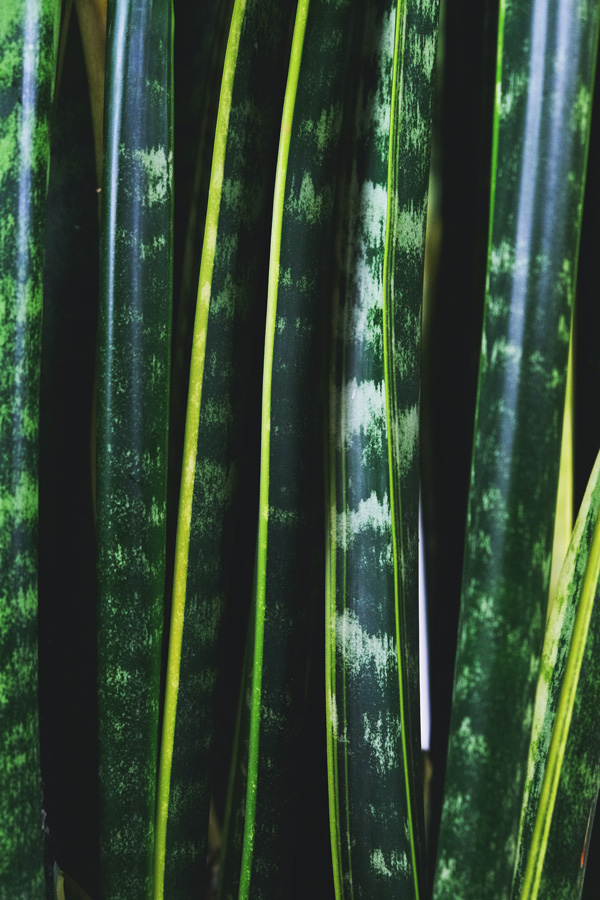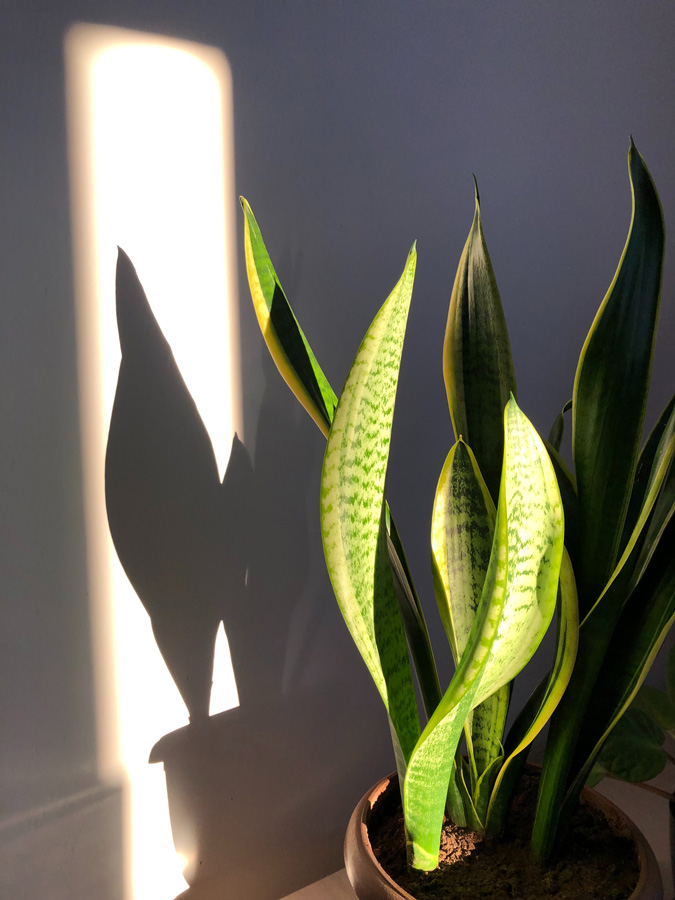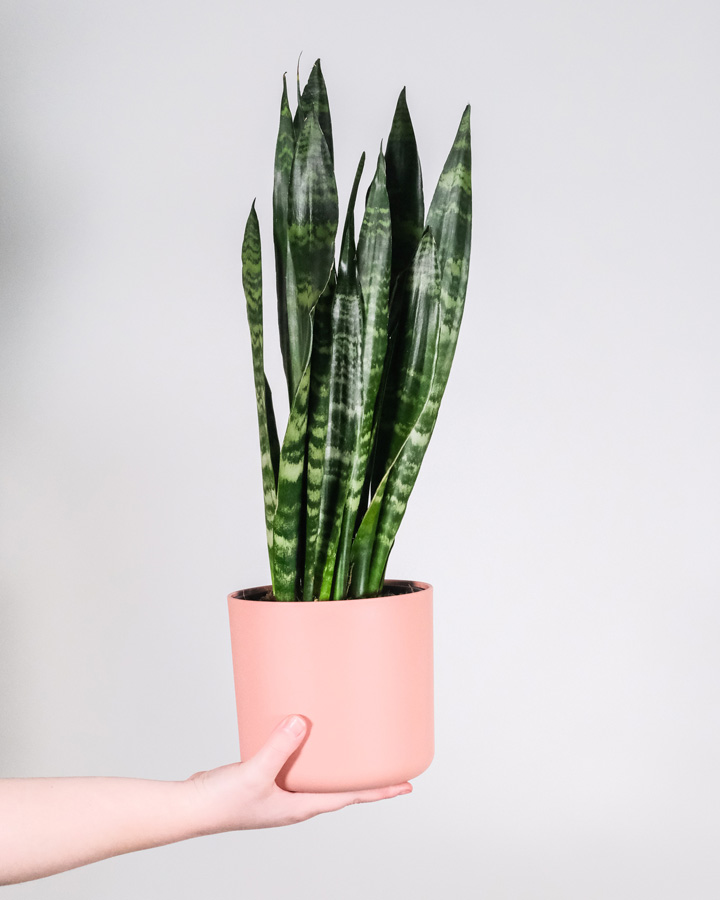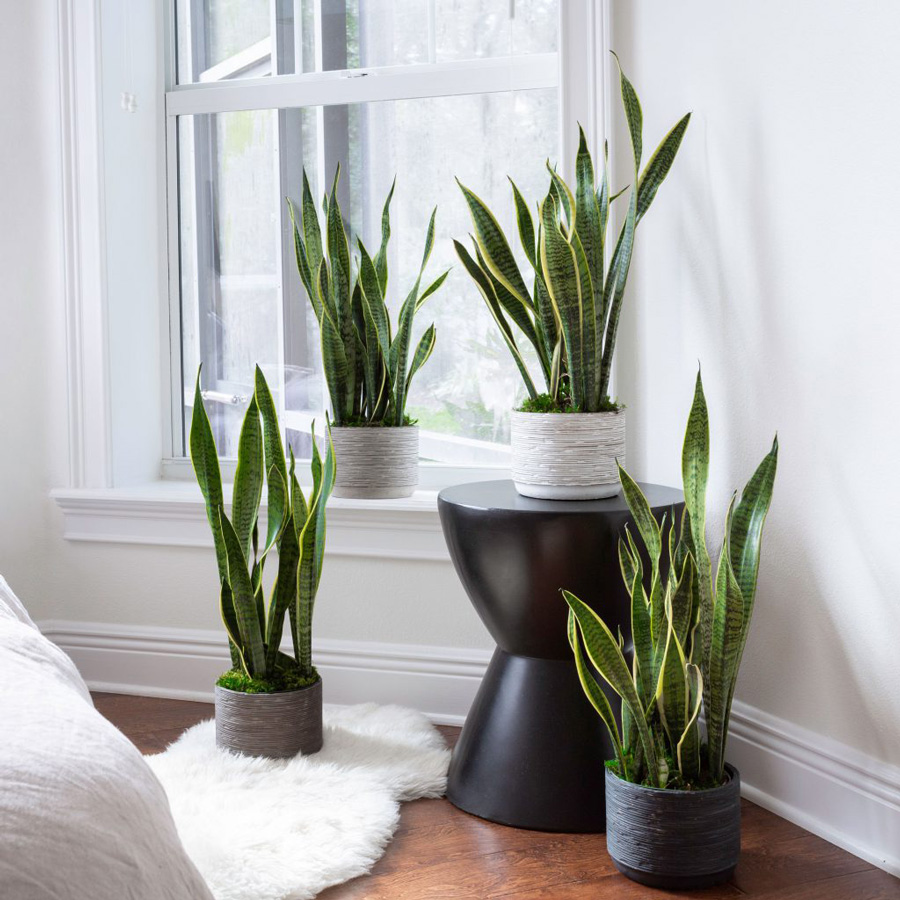Sansevieria
Sansevieria is one of the oxygen champions among home plants. At the same time this plant absorbs harmful substances from the air.
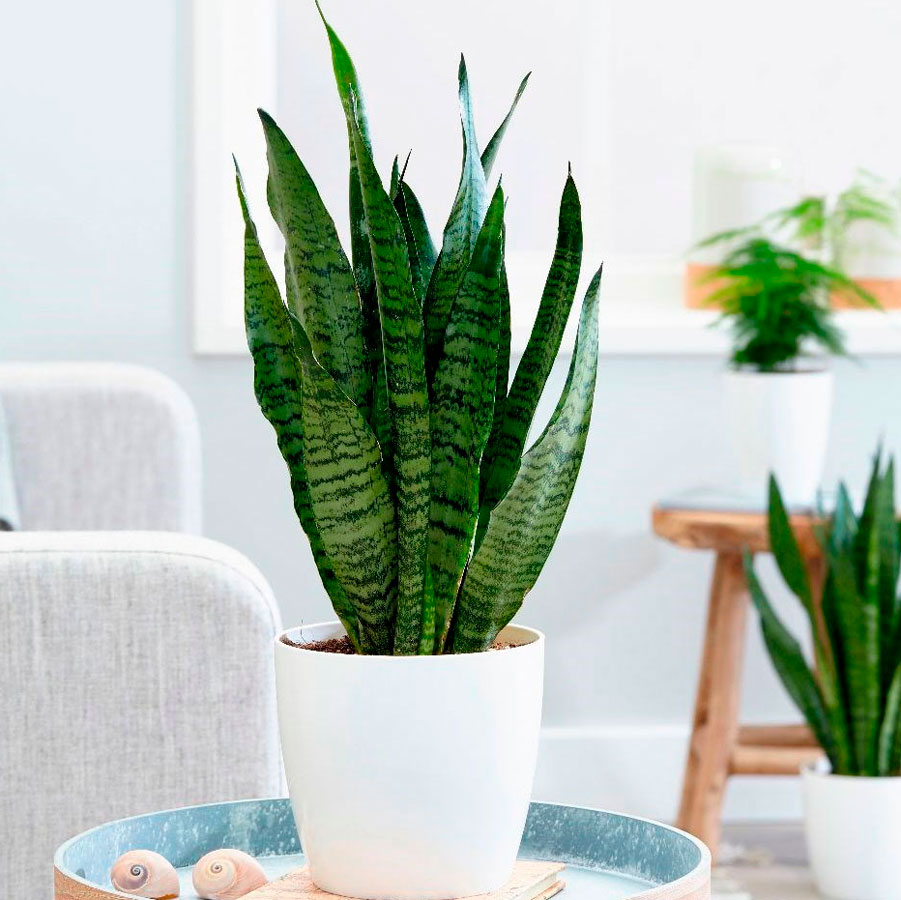
Lightning
Sansevieria will not die in conditions of small illumination, but it is not worth keeping it in the depths of the room. So that the plant was beautiful, with developed and bright leaves, he needs a lot of light, including sunny. Only in case the plant is located on the southern window, in hot summer days it will need shading.
For volatile varieties, the requirements for illumination are somewhat different. If the share of yellow color in the color is large enough, the light is less than the plant, its excess can turn the fox leaves into ordinary green. But in conditions of lack of illumination, the plant will be poorly developed, so for such varieties it is necessary to choose an intermediate position relative to the window. Be sure to protect them from the direct sun, since the colored areas of the leaves are more susceptible to sunburn.
Temperature
To the temperature, the plant is not very welcoming, the most comfortable Sansevieria feels at 16-20 degrees at night, and 21-28 degrees in the afternoon, but can withstand and higher temperatures. When in the cool conditions for a long time (for example, in winter in the transitions of office buildings), it is necessary to significantly reduce watering.
Watering
Sansevieria – drought-resistant plant, succulent. Watering it is not human, the next irrigation should be produced when the soil is dry. The plant persistently makes relatively long periods without water.
When watering, it is necessary to ensure that the water does not get inside the socket, which can be started from it.
With a low temperature in the room, it is necessary to water the scenery less often, also more rare watering is required if the plant is placed in the shade.
In spraying, Sansevieria does not need, but periodically need to cleanse leaves from dust using a rag or a special sweater.
Transfer
Sansevieria transplant is produced as the plant expands. Young plants can be transferred annually, adults – once a few years, when the pot becomes close. The new pot is taken shallow, in width of 1.5- 2 cm more old, Sansevieria does not like a large amount of earth, and the root system has a superficial, shallow.
Soil Sansevieria needs light, malfunctive and quickly breathing. It is better to use specialized earthy mixtures for cacti and succulents or make your primer from sheet, delicate earth and sand in equal parts. If the soil is compiled independently, it is desirable to rolling in the oven or disappear.
Reproduction
Sansevieria at home is most often breeding vegetative: dividing the bush (sideways), the division of rhizomes or leaf cuttings.
When dividing the bush, a sharp knife cuts the rhizome, connecting the parent plant with a process, this rhizome is quite strong. the cut is sprinkled with thustenance coal, placed in a separate pot with fresh soil, watered. in the future, watering should be neat, not excessive. for a month you need to refrain from feeding. As a rule, the grooves are doing well.
The Sansevieria leaf is more complicated, but the advantage of this method is that several new plants can be obtained simultaneously.
Leaves for cuttings should be quite adults and healthy. Typically take old bottom leaves. Sheet cuttings 5-10 cm long dried in air for two days, then placed vertically into wet sand, peat or vermiculite, blocking by 1.5-2 cm. Between cuttings leave a distance of 2-4 cm. Soil slightly tamper to cuttings kept in it. from above are covered with a can or package, takes off them once a day for airing, the substrate is moisturized as drying. Capacity with cuttings are placed in bright, without a straight sun, warm place.
About 2-3 weeks later, the cuttings appear roots, after 1-2 months – kids, after 2-3 months – stroke cuttings that can be searched into separate small pots. Water carefully without pouring.
